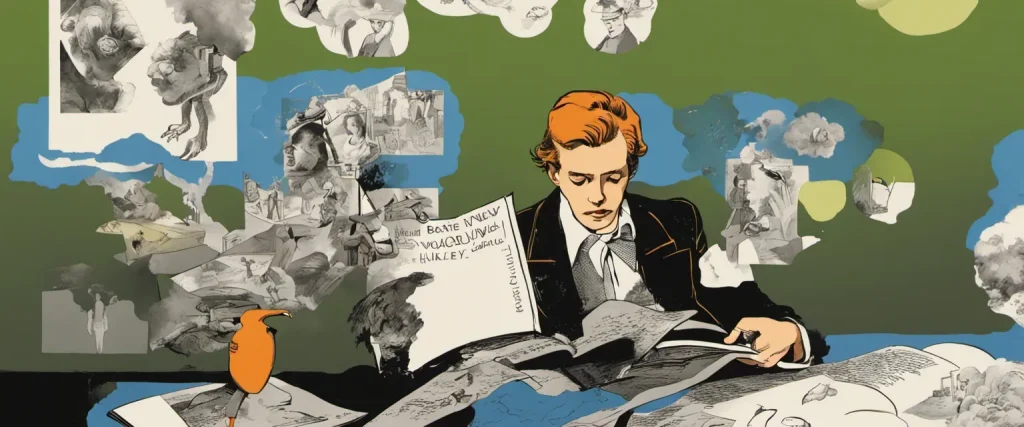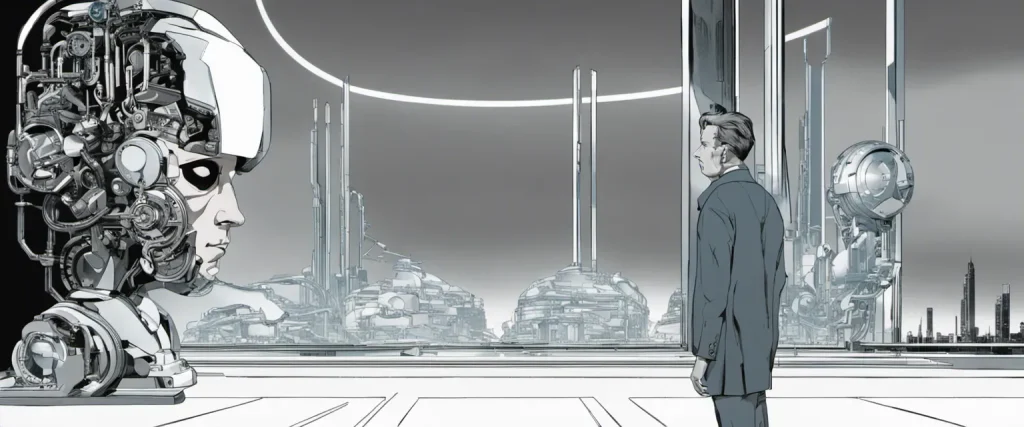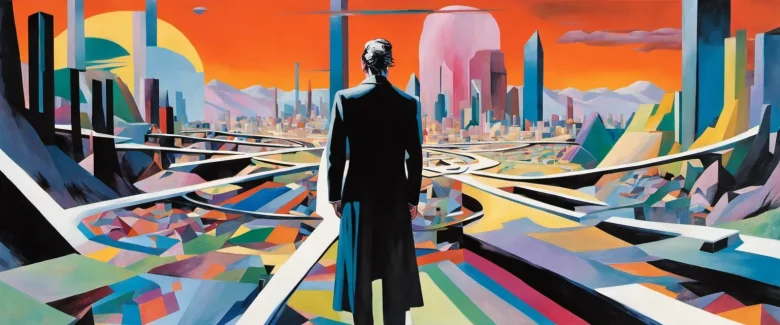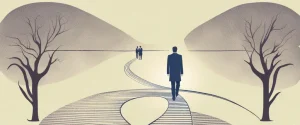In Aldous Huxley‘s dystopian novel, Brave New World, a seemingly perfect society is unveiled, one where technology and consumerism reign supreme. Set in the year AF 632 (After Ford), Huxley’s unsettling vision takes us to a future world where humanity is conditioned and controlled from birth to uphold the principles of stability and happiness. Through vivid imagery and sharp social commentary, Huxley challenges the consequences of a world built on scientific advancements, exploring the cost of sacrificing individuality and freedom for societal order. Published in 1932, Huxley’s masterpiece remains a seminal work in the realm of speculative fiction and a profound critique of the potential perils of technological progress.
Chapter 1: Introduction to the World State
In Chapter 1 of Brave New World, author Aldous Huxley introduces readers to the World State, a highly advanced and dystopian society set in the future. The chapter begins by describing the Central London Hatchery and Conditioning Centre, where babies are mass-produced in a highly efficient and mechanized manner. The facility specializes in creating a society of genetically engineered individuals, who are conditioned to fit into predetermined roles within the World State.
The Director of Hatcheries and Conditioning, Mr. Thomas, serves as the tour guide for a group of students visiting the facility. He explains the process of manufacturing babies, beginning with the Bokanovsky Process which enables 96 identical embryos to be formed from a single fertilized egg. These embryos are then separated into different classes or castes, such as Alphas, Betas, Gammas, Deltas, and Epsilons.
As the tour continues, the Director and students visit various laboratories where babies undergo different stages of conditioning. The aim of this conditioning is to mold individuals to fit seamlessly into society. The Director highlights the benefits of conditioning, claiming that it eliminates suffering, discontent, and irrational desires. He also mentions the hypnopaedic process, where children are repeatedly exposed to recorded messages while they sleep, which helps in shaping their behaviors and beliefs.
Throughout the chapter, Huxley emphasizes the World State’s pursuit of stability, productivity, and contentment, achieved through the manipulation of biology and conditioning. However, hints of the dark side of this society begin to emerge, indicating that individuality, freedom, and natural human impulses have been suppressed. The chapter sets the stage for exploring the consequences of this world in subsequent chapters, as well as introducing key themes such as technology, power, and the meaning of humanity in this dystopian future.
Chapter 2: The Hatchery and Conditioning Centre
Chapter 2 of Aldous Huxley’s dystopian novel “Brave New World” delves into the fascinating and highly structured world of the Hatchery and Conditioning Centre. The chapter primarily focuses on the process of creating babies and preparing them for predetermined social roles.
The chapter begins with the Director of Hatcheries and Conditioning, known as the D.H.C., providing a tour to a group of students. The Director explains that instead of being born, babies in this society are artificially “hatched” from carefully selected female ova. He introduces the students to the cloning process and the Bokanovsky Process, which allows for the mass production of identical embryos and ensures stability within society.
The Director also highlights the process of conditioning, using hypnopaedia, or sleep-teaching, as a method to control individuals from a young age. This conditioning creates predetermined social classes, such as the Alphas, Betas, Gammas, Deltas, and Epsilons, each suited for their respective roles in society. The D.H.C. emphasizes that conditioning is crucial in the control and stability of society, preventing individuality and rebellion.
The students are then shown a group of infants, being mentally and physically conditioned through flashing lights, electrical shocks, and loud noises. These techniques aim to instill beliefs and prejudices while eliminating any natural fears or desires. The Director explains that the conditioning process is so successful that individuals are content with their assigned roles and have no desire for anything beyond what they are programmed to do.
Chapter 2 concludes as the students witness the death conditioning of Delta infants. Death is presented as a natural and desirable part of life, promoting stability and acceptance among the lower social classes.
In summary, Chapter 2 unveils the inner workings of the Hatchery and Conditioning Center, revealing the meticulous process of creating and shaping individuals for their predetermined roles in Brave New World’s highly-controlled society.
Chapter 3: Bernard Marx and Lenina Crowne
In Chapter 3 of Aldous Huxley’s dystopian novel “Brave New World,” the focus shifts to two of the main characters, Bernard Marx and Lenina Crowne. Bernard is an Alpha Plus male who possesses physical traits that deviate from the typical standards of his society, while Lenina is an attractive Beta female who conforms to the societal norms.
The chapter begins with Bernard and Lenina discussing their plans for a vacation. Bernard, feeling detached and alienated from his superficial and pleasure-driven society, desires to escape to an isolated location, while Lenina prefers to visit the crowded and popular Savage Reservation. Despite their conflicting preferences, Bernard manages to persuade Lenina to accompany him to the reservation.
As they board an airplane to the reservation, they encounter several symbols reflecting the totalitarian control of the World State. These symbols include the hypnopaedic phrases playing through the cabin speakers, promoting conformity and obedience, and the Fordian solidarity hymn which emphasizes the worship of technology and consumption. Bernard’s discomfort with these symbols further highlights his outsider status within this highly mechanized society.
Upon arriving at the reservation, they observe the indigenous people and their contrasting way of life, marked by traditions, emotions, and natural childbirth. Bernard, intrigued by their imperfect physical appearances and their simpler existence, feels a sense of connection and superiority, reinforcing his position as an outsider within the World State. He also encounters Linda, a woman from their society who became lost in the reservation years ago. Linda’s repulsive appearance and lack of conditioning further deepen Bernard’s fascination and discontent with the World State.
In this chapter, the stark contrast between the sterile and conformed World State with its predestined lives, and the wild and emotional reservation, unveils the core themes of the novel, including individuality, freedom, and the price of a utopian society.
Chapter 4: A Visit to the Reservation

In Chapter 4 of Aldous Huxley’s dystopian novel, Brave New World, the protagonist, Bernard Marx, takes a trip to the Savage Reservation in New Mexico. This reservation is depicted as an isolated area that preserves the primitive lifestyles of past communities. Bernard is accompanied by Lenina Crowne, a woman he is infatuated with.
As Bernard and Lenina arrive at the Reservation, they encounter people with different physical appearances, as they have not been genetically engineered, as in the World State. The villagers have darker skin, and their lifestyles are marked by poverty, disease, superstition, and lack of technological progress. They still practice religion and have natural childbirth, which is seen as grotesque to Lenina.
Bernard and Lenina meet John, a young man raised in the Reservation by Linda, a Beta from the World State who had become pregnant during a previous visit to the Savage Reservation. John has read Shakespeare and other literature from Linda’s collection, which has had a profound impact on him. He is an outsider welcomed neither by the reservation inhabitants nor by the World State citizens who visit.
Bernard asks John if he would like to return to the World State, and John, being disillusioned with his current life, agrees. Bernard sees this as an opportunity to gain fame and social approval for his unconventional behavior. Back at the World State, John faces difficulties adapting to the artificiality, lack of intimacy, and superficiality of the society. Meanwhile, Bernard realizes his attempt to integrate John into society has unintentionally placed himself as an outsider once again.
Chapter 4 explores the contrast between the highly controlled, technologically advanced World State and the Reservations, which still exhibit elements of humanity’s past. The encounter with John offers a glimpse into the potential consequences of the World State’s attempts to eliminate individuality and emotional depth, setting the stage for further developments in the story.
Chapter 5: John the Savage
In Chapter 5 of Aldous Huxley’s novel “Brave New World,” the reader is introduced to the character of John the Savage. The chapter begins with Bernard Marx and Lenina Crowne visiting the Savage Reservation in New Mexico. As they explore the reservation, they come across a group of natives practicing a traditional ritual, which shocks and confuses Lenina.
Among the natives, they discover a fair-skinned young man named John. It is soon revealed that John is the son of the Director of the Central London Hatchery and Conditioning Centre, Thomas. While John was born in the World State, his mother was accidentally left behind during a trip to the reservation and ended up getting pregnant. Raised by his mother on the Reservation, John experienced a life completely isolated from the controlled and conditioned society of the World State.
Bernard and Lenina take John back to the World State, where he becomes an instant curiosity due to his contrasting upbringing. The chapter highlights the stark differences between the World State and the Reservation. John is appalled by the citizens’ complete lack of individuality, promiscuity, and their reliance on synthetic drugs, like soma, to escape reality. Despite being fascinated by the technological advancements and pleasures of the World State, John criticizes the society for lacking genuine connections, emotions, and a sense of purpose.
Throughout Chapter 5, John’s experiences act as a critique of the dystopian society created by the World State. With his unique perspective, John represents an alternative way of life and challenges the values of the society he encounters, offering readers a glimpse into the potential struggles and conflicts that lie ahead.
Chapter 6: John in the Brave New World
Chapter 6 of Aldous Huxley’s Brave New World introduces readers to the character of John, also known as “the Savage,” who has been brought up in the Wild Reservation, a place outside the controlled civilization of the World State. The chapter begins with Bernard Marx taking John to London from the reservation, as he sees the young man as an opportunity to gain fame and popularity. As John steps foot in the brave new world, he is overwhelmed by the technological marvels and the hedonistic lifestyle.
John is initially shocked by the sight of the hatchery and conditioning center, where human beings are artificially created and conditioned to fit predetermined roles in society. The idea of people not being born naturally but instead manufactured deeply disturbs and disgusts him. He rejects the promiscuity and superficiality that permeate this society and finds solace in Shakespearean literature, which he considers the epitome of art and authenticity.
As the chapter progresses, John becomes a spectacle in society due to his appearance and behavior. His fair skin, unusual clothes, and knowledge of classic literature captivate the interest of many people, much to his discomfort. Even though John is hesitant to immerse himself in the world that angers and confuses him, he becomes the talk of the town. His presence attracts the attention of important figures, and his perspective on life becomes a subject of debate.
Chapter 6 showcases the clash between the barbaric and natural values that John was raised with and the artificial and pleasure-driven society he encounters. As readers delve into the chapter, they witness John’s struggle to find his place in this foreign and uneven world, and they begin to question the cost of sacrificing individuality and freedom for a utopian society.
Chapter 7: The Dissatisfaction of Bernard Marx
In Chapter 7 of Brave New World, titled “The Dissatisfaction of Bernard Marx,” Aldous Huxley delves into the main character’s internal struggles and growing dissatisfaction with the world he lives in. Bernard Marx is an Alpha Plus intellectual who constantly feels isolated and alienated from his society.
Bernard’s discontent stems from his physical appearance. Unlike other Alphas, he is smaller in stature, making him feel like an outsider. This physical disparity amplifies his sense of inadequacy and intensifies his desire for connection and acceptance. His dissatisfaction is further fueled by his opposition to societal norms, including the strict adherence to promiscuity and the widespread use of soma, a drug that suppresses negative emotions.
Bernard’s longing to be understood and appreciated drives him to seek out John, a “Savage” who was raised outside of the engineered society. This encounter provides Bernard with a glimmer of hope, as John’s values and rebellion against the shallow existence of the World State resonate with him. Bernard sees in John a way to challenge the oppressive social order and finds solace in their shared pessimism.
However, as the chapter progresses, it becomes apparent that Bernard’s intentions may not be entirely honorable. He is more interested in using John as a tool to boost his own status and prove his worth to the society that has rejected him. This realization highlights the complexity of Bernard’s character, as he oscillates between genuine dissatisfaction and personal ambition.
Chapter 7 establishes Bernard Marx as a conflicted and multi-dimensional character. His dissatisfaction with the depraved world he inhabits drives his desire for change, but his intentions are clouded by a persistent need for validation and approval.

Chapter 8: The Downfall
Chapter 8 of Brave New World by Aldous Huxley delves into the emotional turmoil experienced by the protagonist, John, and his ultimate downfall within the dystopian society.
The chapter opens with John accompanied by Lenina as they attend a Solidarity Service, a mass ritual that promotes unity and emotional catharsis through a combination of chanting, dancing, and the consumption of soma, a mind-altering drug. John, however, is visibly disturbed by the orgy-like atmosphere and refuses to partake in the experience, causing him to become a spectacle.
After the Solidarity Service, John and Lenina return to John’s home, where he lives in an abandoned lighthouse. There, he shares his collection of Shakespearean literature with Lenina, who finds the works confusing and distasteful compared to the mindless entertainment and easy pleasure sought in their society. Despite their growing emotional connection, Lenina’s lack of understanding deeply frustrates John, leading to an intense argument between the two as their petulant desires clash.
John, feeling isolated and tormented, seeks escape by repeatedly physically striking himself as an act of penance for his desires towards Lenina. This self-punishment is witnessed and understood by an outsider, who records a video of John’s actions to share with others. The video soon becomes viral, causing John to become a sensation, with people flocking to see and emulate his self-inflicted pain.
Distraught and overwhelmed by the encroaching crowd, John attempts to escape them and his internal turmoil by trying to find solitude. However, his solitude is short-lived as the crowd finds him, and in a state of delirium, he lashes out at them, declaring his disdain for their shallow and mechanized society. The chapter concludes with this outburst culminating in John’s physical attack on Lenina, the embodiment of the society he despises.
In Chapter 8, Huxley emphasizes John’s increasing alienation from the World State as he grapples with his desires, his adherence to Shakespearean ideals, and the profound differences between his emotional depth and the shallow, pleasure-driven culture of Brave New World.
After Reading
In conclusion, Aldous Huxley’s “Brave New World” paints a disturbing picture of a technologically advanced future society that prioritizes shallow pleasure, consumerism, and conformity over individual freedom and human connection. Through the experiences of the protagonist, John, who is torn between the savage values of a reservation and the soulless utopia of his society, Huxley warns against the dangers of a world stripped of human emotions and true happiness. Through his thought-provoking exploration of themes such as conditioning, genetic engineering, and the devaluation of human life, Huxley raises important questions about the potential consequences of unchecked progress and the importance of maintaining our humanity in the face of advancing technology. Ultimately, “Brave New World” serves as a powerful warning, urging readers to reflect on the implications of sacrificing individuality and freedom for the sake of societal stability and superficial gratification.
1. “1984” by George Orwell: Orwell’s dystopian masterpiece explores a totalitarian society where individuality is suppressed, and government surveillance is all-pervasive. This book, like “Brave New World,” delves into the themes of government control, the power of language, and the effects of totalitarian rule.
2. “The Handmaid’s Tale” by Margaret Atwood: Set in a near-future society, this thought-provoking novel tells the story of Offred, a Handmaid tasked with bearing children for powerful men. With themes of oppression, gender roles, and the consequences of religious extremism, Atwood’s chilling tale resonates similarly to Huxley’s exploration of a dystopian society.
3. “Fahrenheit 451”: A dystopian novel set in a future where books are banned and burned by the government. The story follows Guy Montag, a fireman whose job is to burn these illegal books. However, as Montag witnesses the oppressive society around him, he becomes increasingly curious about the knowledge contained within books. This curiosity leads him on a journey of self-discovery and rebellion against the repressive regime. Through its thought-provoking narrative, Fahrenheit 451 explores themes such as censorship, the power of information, and the importance of critical thinking.
4. “Brave New World Revisited” by Aldous Huxley: While not the original novel, “Brave New World Revisited” is an insightful non-fiction counterpart by Huxley himself. In this collection of essays, Huxley reflects upon the predictions he made in his earlier work and analyzes their relevance in the context of the post-World War II era. He elaborates on themes like technology, propaganda, consumerism, and how they shape society.
5. “One Hundred Years of Solitude” by Gabriel Garcia Marquez: Although not a dystopian novel, Marquez’s masterpiece shares the qualities of critical analysis and profound social commentary present in the previously mentioned books. “One Hundred Years of Solitude” tells the story of the Buendía family across multiple generations, offering a panoramic view of their lives and the cyclical nature of human history. Marquez’s magical realism and exploration of themes like power, greed, and the consequences of solitude make this a worthy addition to the list.



